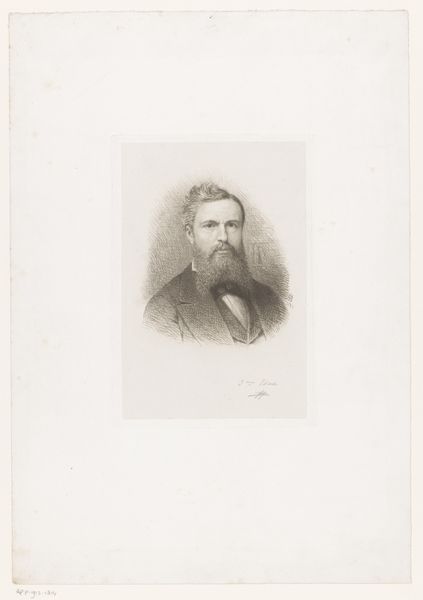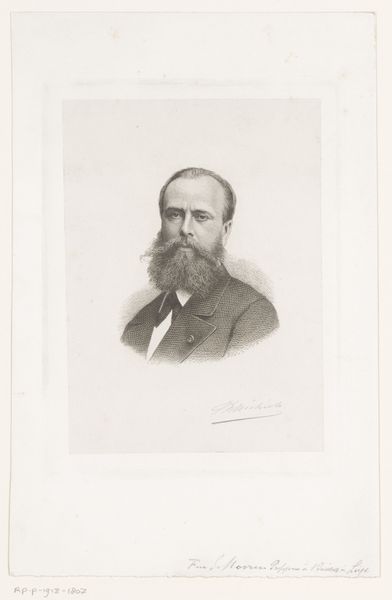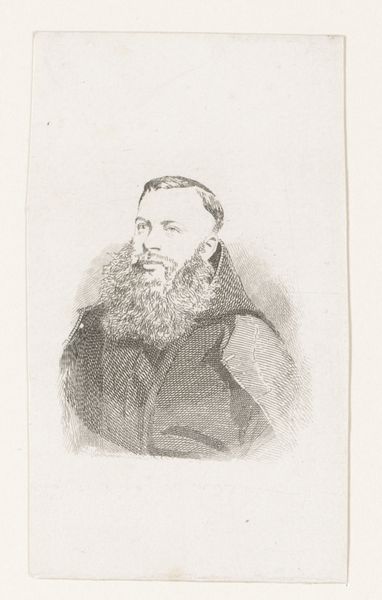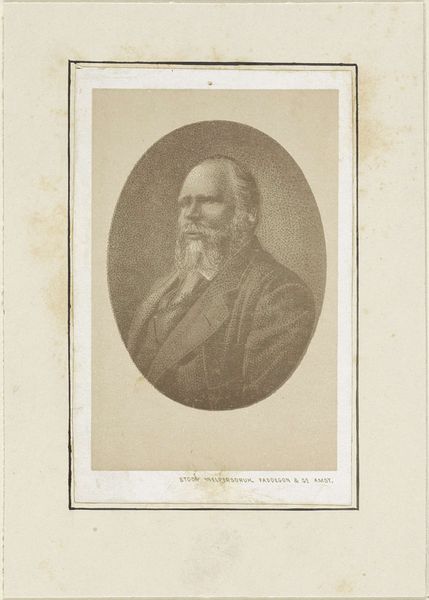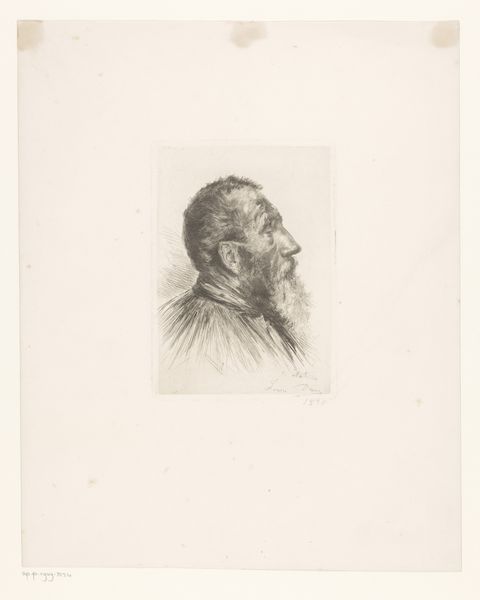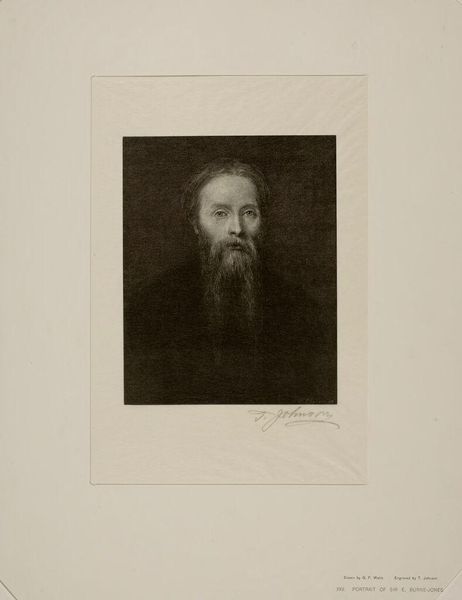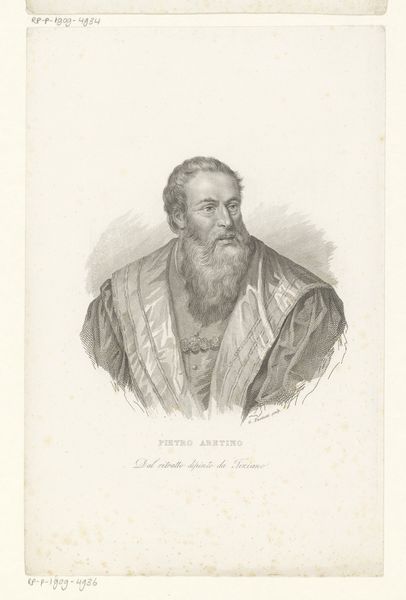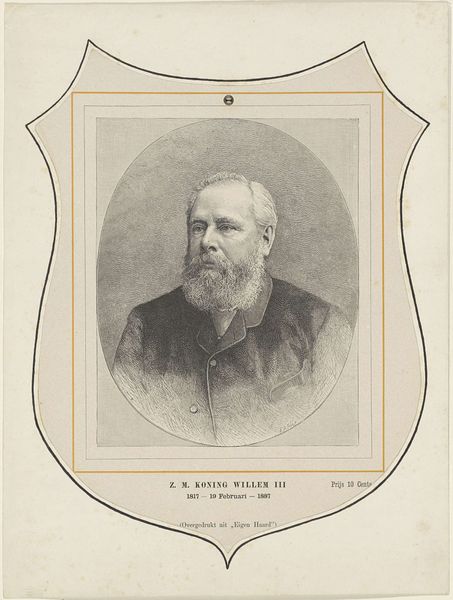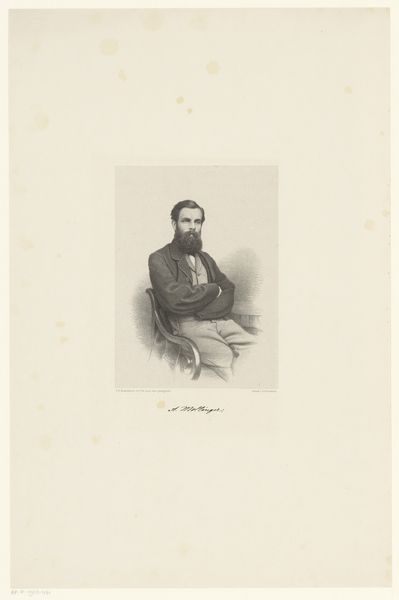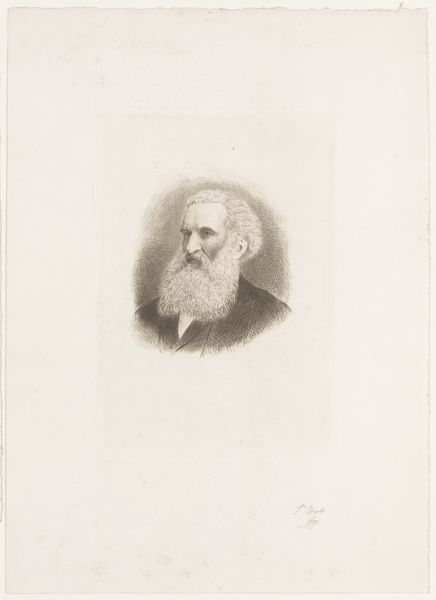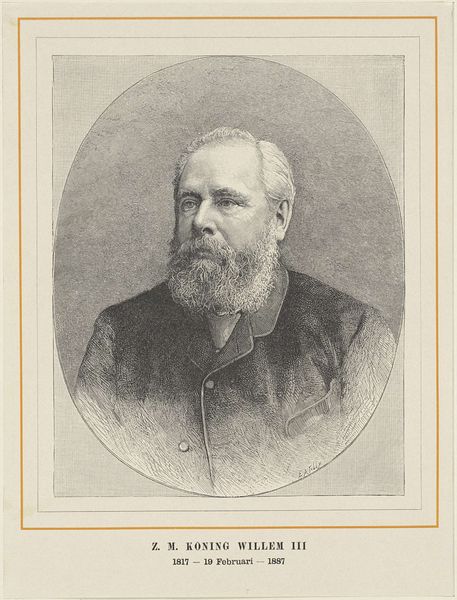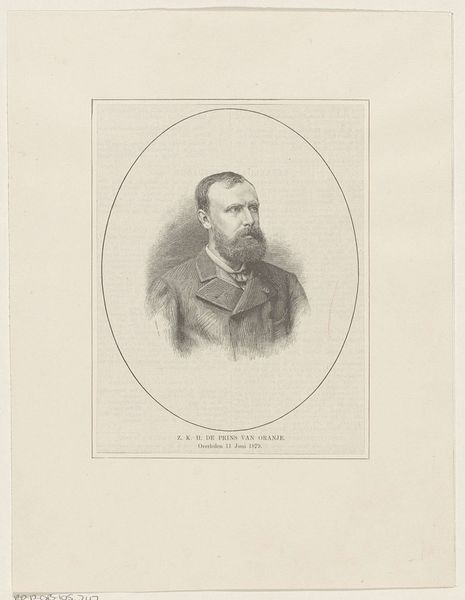
drawing, print, etching, ink
#
portrait
#
drawing
# print
#
etching
#
charcoal drawing
#
ink
#
pencil drawing
#
portrait drawing
#
realism
Dimensions: height 225 mm, width 160 mm
Copyright: Rijks Museum: Open Domain
Art Historian: Here we have a portrait, rendered through etching and ink, of Johannes Bogerman, attributed to N.M. Schild, dating from around 1830 to 1845. It is currently housed in the Rijksmuseum. Artist: Wow, that beard is something else! It practically glows. The rest of the drawing feels rather…austere, almost severe, but that luminous beard softens everything. It's like a cloud descended onto his chest. Art Historian: Indeed. Bogerman was a significant figure in Dutch religious history, a staunch Calvinist and the president of the Synod of Dort, a pivotal assembly that shaped Reformed theology. This image likely served to project a sense of authority and piety, fitting for a religious leader. Artist: Authority, yes, I get that. There's something so… official about the way he’s presented. But is it just me, or does he also look a bit…tired? Like maybe dealing with all that theology was just plain exhausting? That collar looks rather uncomfortable, too! Art Historian: It's possible. Representational portraiture in this era often aimed to capture the essence of the subject's character and role, as perceived by society. Prints like this circulated widely, solidifying Bogerman's image in the collective memory of the Dutch populace. Consider the historical context: this etching likely reinforced established perceptions. Artist: Well, whatever he was feeling, the artist did a stunning job with the light. See how it catches the fur trim and reflects off his face? It’s almost as if the artist saw him not just as a religious icon, but as…a person. A bit severe maybe but a human. The meticulous details, achieved just with ink and etching—truly amazing! Art Historian: Indeed, the technique highlights the subject’s importance. Moreover, analyzing this artwork within the broader scope of 19th-century print culture sheds light on how images were utilized to disseminate ideas and reinforce power structures. Artist: Power structures or not, I’m stuck on that beard. It's the first thing your eye goes to. It speaks to me on a very… human level. Art Historian: Ultimately, analyzing art from a historic perspective grants insights into societal values, visual culture trends, and individual experiences—which collectively weave the narrative of this artwork’s life and place it on a timeline. Thank you. Artist: And that about wraps it up! Beards and all, this artwork gave us lots to think about!
Comments
No comments
Be the first to comment and join the conversation on the ultimate creative platform.
